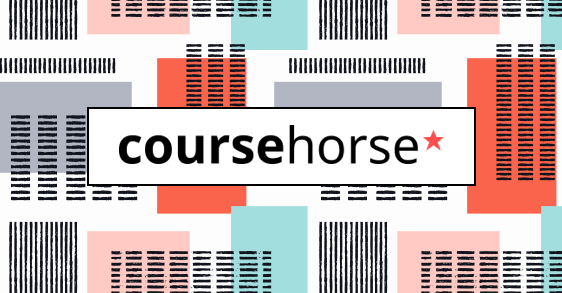Forecasting Projects and Customer Deliveries
- All levels
- 18 and older
- $1,100
- 200 1st Ave West, Seattle, WA
- 10 hours
Thankfully we have 2 other Business Classes for you to choose from. Check our top choices below or see all classes for more options.
Digital Photo Academy @ 3015 NW 54th St, Seattle, WA
Capture the vintage appeal of the Ballard Locks and its bustling vessel crossings in this hands-on photography course. Learn panning, aperture priority, and depth of field techniques to create stunning narratives through your images. Explore the fish ladder, waterfalls, and sea lions for unique and captivating photo opportunities.
May 25th
11:30am–2:30pm PDT
Unlock your dating potential and conquer your anxieties with the intensive Dating Mastery Program at Craft of Charisma. Learn to start conversations effortlessly, master the art of touch, navigate rejection, and become the leader in your relationships. Join a small class and receive personalized coaching to transform your social skills and build lasting connections.
Jun 7th
7:30–11:55pm PDT
Meets 8 Times
Forecasting Projects and Customer Deliveries
No estimates, No speculation, No crystal ball gazing!
A mathematically robust approach to fact-based planning for the enterprise scale projects and programs
Traditional deterministic planning – analysis, decomposition and fine-grained, often time-based estimation – is part of the reason the Agile movement happened. Yet, in the pragmatic real-world, customers and other stakeholders still need plans and forecast delivery dates and commitments. Agile guidance to address these real-world concerns haven’t been fit-for-purpose: overly simplistic techniques based on metrics such as velocity have been failing product owners and scrummasters the world over.
In response to this gap, two alternative paths have emerged: do it harder, deeper, and with greater intensity – get better at estimating; and at the opposite end, the #noEstimates movement. A lot of mumbo-jumbo, hockus-pockus, and pseudo-mathematical black magic and witchcraft has entered the Agile planning domain.
In this 1-day class developed by one of Kanbanland’s expert mathematician, Alexei Zheglov, we offer you a fact-based, scientific approach to planning projects and customer deliverables in a lightweight and agile fashion using the mathematics of probability and risk management. You will learn to produce robust, mathematically sound, defensible forecasts and plans, using the minimal of effort. You’ll leverage real historical data to make better plans. You’ll learn just how many historical data points you need to forecast with confidence. You’ll learn the mathematical and scientific basis for every practice you’ll use.
Learn to plan like pro, make promises you can keep and lead projects with confidence!
Learning Objectives:
Who Should Attend?
This class is for anyone who is held accountable and responsible for customer deliveries and deliverables. If you have to make promises and commitments on scope, schedule and budget then this class is for you. It is appropriate for anyone with the following role: project manager; delivery manager; program manager; portfolio manager; product owner; scrummaster; or release manager.
This class is useful for anyone who wants to understand how to use existing historical data to make better plans and forecasts and for people who need to make promises they can keep and commitments in which they can have full confidence.
There are no specific prerequisites for this class. It is recommended that attendees have a project management or service delivery background or a role in planning, estimating, forecasting or risk management.
Agenda
Break
Lunch
Break
Class Materials:
All students will receive a read only student edit of the classroom Powerpoint, a copy of the 2nd Edition of the book, Fit for Purpose – How Modern Businesses Find, Satisfy & Keep Customers by David J. Anderson & Alexei Zheglov, and a printed copy of the Fit for Purpose infographic poster.
Substitutions are accepted at any time. Cancellations must be notified by email and refunds will be provided according to the following:
More than 10 days prior = 80% of course fee
5 to 10 days prior = 50% of course fee
Less than 5 days = no refund provided
Lean Kanban, Inc. reserves the right to postpone or cancel this event if there are insufficient registrations or if presenters are unable to attend due to illness. If necessary, you will be notified no later than 7 days prior to the event and all registration payments will be refunded promptly. If circumstances require, presenters may be substituted for alternative qualified presenters with equivalent experience.
Please be advised that events can be subject to changes in date and/or venue due to acts out of our control such as bad weather, civil unrest, etc. It is recommended that you purchase changeable and refundable tickets. Lean Kanban, Inc. will not be responsible for incurred costs in the event that we need to make changes due to circumstances beyond our control.
In any event where a customer wants to cancel their enrollment and is eligible for a full refund, a 5% processing fee will be deducted from the refund amount.
People who viewed this class also viewed the following classes
Get quick answers from CourseHorse and past students.
The David J Anderson School of Management is a Seattle-based training center and global consultancy focused on training managers to make better decisions. Top management professionals such as David J Anderson present the Lean Kanban curriculum including the highest level professional development classes...
Read more about Lean Kanban Inc.

This school has been carefully vetted by CourseHorse and is a verified Seattle educator.

Lean Kanban Inc.
Lower Queen Anne
200 1st Ave West #404
Seattle, Washington 98119 Lower Queen Anne
200 1st Ave West #404
Seattle, Washington 98119
Booking this class for a group? Find great private group events
Or see all Professional Group Events
Explore group events and team building activities ranging from cooking, art, escape rooms, trivia, and more.



More in Professional




Get special date and rate options for your group. Submit the form below and we'll get back to you within 2 business hours with pricing and availability.